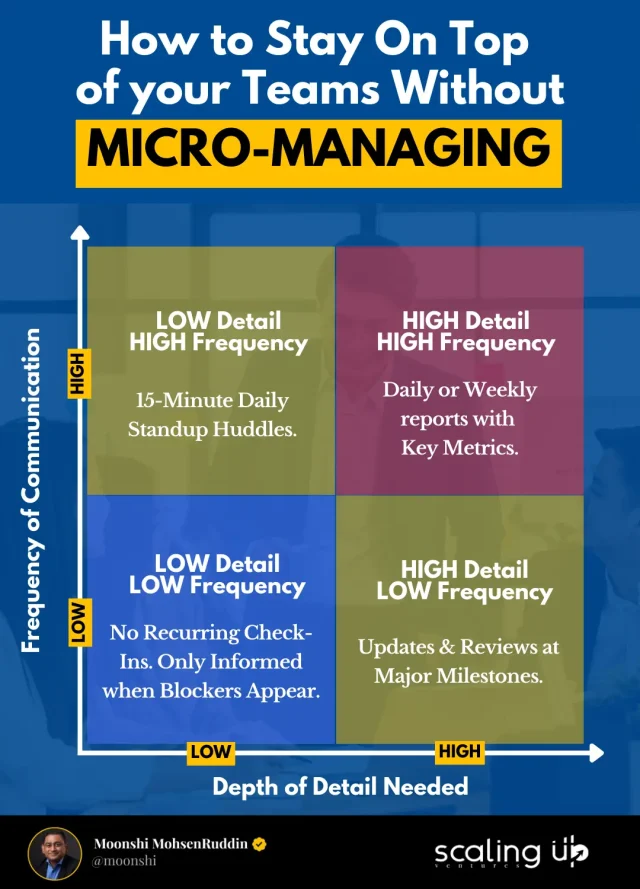Use this simple matrix to stay on top of your SME teams… without micromanaging!
The best leaders know HOW to find the sweet spot in being involved in their direct reports.
Too little… and you risk being blindsided.
Too much… and you risk micromanaging.
Instead, you want to have enough information to act fast when needed, without choking your team’s autonomy.
One simple way to do this is with the Visibility Grid.
It maps your projects based on:
- How much detail you need.
- How often you need the progress updates.
Take a look at the grid below.

For example, here are some projects that might be classified in each quadrant:
- High detail, high frequency: Critical work like a high ticket project for a big client. Daily or weekly updates are a must.
- High detail, low frequency: Large, slower projects like implementing a new IT system. Check in at key milestones or phases that’s broken into fortnightly.
- Low detail, high frequency: Quick-moving tasks like ongoing marketing campaigns, or engaging a vendor. Short standups or email summaries keep things on track.
- Low detail, low frequency: Self-sustaining work like admin tasks. Just need to be alerted if something goes wrong.
Use this grid to map your projects and share the expectations clearly with your team. Tell them:
- WHAT you need. Make it Specific and Measurable.
- WHEN you need it. Make it Time-bound.
- HOW you want it delivered. Make it Specific and Achievable.
Next, block these events in your Google or Outlook Calendar. Add the people who must execute the progress updates.
Once done, this simple Alignment Meeting at the start of every project will save so much time, energy and money downstream!
With Specificity and Clarity, your team will also be able to Execute faaasssst, without them needing to second-guess their work.








